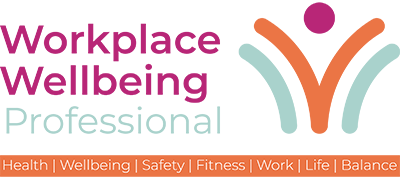This is part two in a series by the writer on menopause.
I am a 55-year-old woman, and about six years ago, I started to feel that my body was changing, especially around that time of the month. Until then, I’d been fortunate, as my period had never had any symptoms that interfered with my lifestyle or work.
I knew many women who had terrible migraines, bloating or pain, and life was really compromised on a regular basis. But at the age of 49, that all changed for me. I started experiencing all sorts of strange symptoms: head spins, cramping in my legs, joint aches, heavy bleeding and incredible bloating where I went up two dress sizes.
I also started to put on weight, especially around my midsection, despite increasing my exercise level and trying to reduce my calorie intake. I was pretty sure it had to do with menopause
I thought I might need hormone replacement therapy (HRT) to manage the symptoms, but I have a strong family history of breast cancer. I’d heard that taking HRT increased a woman’s risk of breast cancer, so wanted to speak with an expert about it, a consultant gynaecologist who specialises in the management of menopause.
When I met her, I had all my hormone test results ready, but the first thing she did when I sat down in her office was ask me about me. What were my symptoms? Did I have any of these symptoms, from a detailed questionnaire? What was my diet like? How much did I exercise?
After reviewing everything, she provided the latest evidence about HRT but shared her professional opinion: What I needed was a change in diet. So I consulted one of the dietitians I work with who specialises in helping women going through menopause.
What I learned changed everything.
The Link Between Oestrogen, Insulin and Menopause
Most people are aware that menopause is associated with declining levels of oestrogen. But what many people don’t know is that one of oestrogen’s key roles is to optimise the effects of the hormone insulin.
Insulin works like a key that unlocks the cells in our body and allows glucose (sugar from carbohydrates) to move into the cells, where it’s used as energy. It also helps our bodies store glucose in our livers for use at other times.
When a women’s oestrogen levels decline, insulin becomes less effective at converting glucose into energy. This condition, known as insulin resistance, means that glucose stays in our bloodstream and is also stored as fat in the fat cells (adipose cells), predominantly around our abdomen. This is one of the reasons why we develop “middle aged spread”.
It also explains the weight gain in menopause. But what about the hot flushes, brain fog and leg cramps? Many of these symptoms are caused by changes to the blood vessels. Insulin resistance and elevated blood glucose levels can lead the cells than line the blood vessel to absorb far more glucose than normal. This results in reduced blood flow through the vessels and a drop in blood supply to tissues. If it becomes a long-term situation, damage to these blood vessels can occur, making women prone to heart disease.
Heart disease is the leading cause of death for women, causing approximately one in three deaths in the US each year. We hear lots about breast cancer, but women are twice as likely to die of heart problems, such as a heart attack than they are from breast cancer. The drop in oestrogen that occurs at the time of menopause contributes to the risk.
Additionally, women are three times more likely to get Alzheimer’s Disease compared to men, and the changes are evident on brain scans in women at the time of menopause. Affected women have no symptoms at the time; they occur later. The reasons why are still being studied, but it’s thought that both changes in the blood vessels and a reduction in glucose supply to the brain may be contributing factors.
Why Diet Matters So Much
It’s for these reasons that what we eat as women who are peri-menopausal or post-menopausal matters. And why, often, women gain weight and find it hard to lose weight despite no change in the diet they have been eating for the last 45 years or more. It’s also why our diets have such an influence on many of the other symptoms of menopause.
I’m not saying that carbohydrates are bad. I grew up in the time of Rosemary Conley, where fat was bad and carbs were good. Then along came keto and paleo, where protein and fat were good and carbs were the enemy. The only type of bad food is ultra-processed, which is food made in an industrial manner with artificial additives and preservatives. I think a great way of approaching food choices is “never eat anything your grandmother wouldn’t recognise”.
What Worked for Me
Eating to manage our menopausal symptoms needs to be a way of life. So rather than a strict diet, you need to think about food choices. Below are some of the things that my dietitian recommended and that helped me get rid of my symptoms and lose 8kg in the process:
- Ditch white rice — it’s full of sugar and low in fibre, raising your blood sugar.
- Swap tropical fruits, such as mango and pineapple, for berries and apples.
- Increase your protein — lean meats, such as chicken and fish have virtually no sugar, and are essential to build muscle and make you feel full. Tinned tuna is a great one to take to work.
- Boil a load of eggs — stick them in the fridge and grab a couple for lunch on your way out the door to work. They’re another great source of protein, and boiled eggs will last all week in the fridge.
- SMASH — sardines, mackerel, anchovies, salmon and herring: all oily fish that provide a great source of protein and help control the blood sugar levels in our system. They also contain omega 3s which are essential for brain function.
- Avoid sandwiches and pasta salads at lunchtime. These may be easy to eat “al-desko”, but they contain high levels of sugar, especially white bread. Instead, choose a salad bowl from the supermarket and add your choice of protein — chicken, poached salmon, prawns, eggs, tofu. Most supermarkets sell cooked fish and meat in this way.
- Dress salads with olive oil and vinegar — both are helpful in managing blood sugar levels
- Swap the crisps and pretzels for nuts and olives.
- Cook up a load of roasted vegetables: onion, tomatoes, courgettes, aubergine, peppers — all tumbled into a roasting tray and cooked with garlic and olive oil. They’re high in fibre and tasty and make for a great lunch addition when paired with your choice of protein.
- Eat lots of leafy greens. I try and have some sort of green vegetable or salad with lunch and dinner. Leafy greens contain a large variety of vitamins and minerals and also lots of fibre.
- Choose plain Greek yoghurt and berries or a pear or apple for a sweet treat.
- Dark chocolate (70%+) is a girl’s best friend — one or two squares can hit the spot without overdoing (and helps when the need for a sweet treat arises).
- Lastly, be mindful with alcohol, as it’s full of sugar. I couldn’t give it up completely, but I try hard to have at least three or four alcohol-free days a week. If you’re considering alcohol-free options, just check the sugar content, as some have more sugar than regular wine or beers.
These aren’t rules. They are things that worked for me to help me reduce my sugar intake but still enjoy team lunches and dinners out with friends. Best of all, I lost 8kg without feeling deprived.
If you’re serious about how your food choices impact your health and wellbeing, nothing beats an individual consultation with a dietitian or nutritionist who can help your tailor your eating patterns to your specific symptoms, food preferences and lifestyle.
Claire Small
Claire is a Consultant Physiotherapist and the Chief Clinical Officer and co-founder of Pure Sports Medicine. As co-founder she has been with Pure Sports Medicine since its beginning in 2003, delivering outstanding clinical care for over 20 years.
Claire’s clinical specialities include issues of the spine, hip, groin and pelvis including persistent problems, pregnancy-related complaints and movement dysfunction. She has a specific interest in helping women manage the symptoms associated with menopause and metabolic syndrome.
As an accomplished and well-established clinician, speaker and researcher, Claire is also an Honorary Lecturer and Examiner at Queen Mary University of London and the University of Hertfordshire, an invited Lecturer at UCL, Kings College, London & University of Bath and a Journal Reviewer for Manual Therapy and Physical Therapy in Sport & the British Journal of Sport Medicine. She was made a Fellow of the Musculoskeletal Association of Chartered Physiotherapists in 2016.
In 2015 she was named Australian Businesswoman of the Year in the UK for her work in healthcare.



